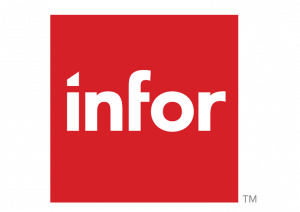Believe it or not, many agencies have now crossed the half-year mark for working remotely during the COVID-19 pandemic. As the crisis continues, many citizens are wondering how the coronavirus has permanently altered the public sector.
Six months in, behavioral data may help agencies chart what is next for their employees. Behavioral data analyzes behavior using cognitive, cultural and other related information. Through behavioral data, agencies can understand how their talent acts better than ever.
On Thursday, four government thought leaders explained what behavioral data has revealed about their organizations this year. Speaking during GovLoop’s latest online training, the group also predicted what might be next for agency talent.
Traci DiMartini, Chief Human Capital Officer (CHCO) for the Peace Corps., represented the public sector. Merrick Krause, CHCO at the General Services Administration (GSA) and James Illingworth, Personnel Psychologist in the Strategy and Innovation Branch of the National Aeronautics and Space Administration’s (NASA) Office of the Chief Human Capital Officer (OCHCO), also appeared on behalf of their agencies.
Marcus Mossberger, Industry and Solution Strategy Director for Infor, added private-sector insights to Thursday’s event. Infor is an enterprise software provider.
Here are three lessons behavioral data has taught federal agencies about their personnel during 2020’s first half:
1. Everyone is human
COVID-19 has reemphasized the “life” in work-life balance. According to Illingworth, NASA has realized technical abilities have dominated its hiring and recruiting processes for too long.
“You can be a Pulitzer Prize winner for propulsion systems, but if nobody wants to work with you, it won’t work,” he said.
DiMartini said the pandemic has humanized the Peace Corps.’ workforce, which is typically dispersed worldwide.
“We certainly want people to feel accomplished,” she said of agency employees. “But it is just as important for them to be kind. Work is just one part of their identity. They have a whole package they’re bringing to the office.”
2. Realize remote work’s potential
According to Krause, GSA has added about 200 people to its workforce since the pandemic began. GSA accomplished this growth by onboarding new hires virtually.
“There’s no question that the federal workforce is going to be doing a lot more of this in the future,” he said. “Having to do it virtually adds another factor to consider.”
Krause added agencies can recruit or reskill employees virtually going forward. Reskilling involves teaching existing employees skills they previously lacked. Agencies that reskill their employees can save valuable energy, money and time they might spend attracting rookie hires.
3. Spread the wealth
According to Mossberger, agencies can use behavioral data to understand how their various teams operate most effectively.
“You don’t want five Shaquille O’Neals on your basketball team,” he said, referencing the former professional athlete. “Your free throw percentage alone would be atrocious.”
For example, Mossberger cited traits such as self-discipline which could help agencies decide which employees fit remote work the best.
What’s Next for Work
Why might behavioral data matter? Mossberger argued COVID-19 has made widely dispersed workforces the future of agencies. Subsequently, behavioral data can help agencies understand what’s best for their employees.
“We’re in the business of people,” Mossberger said. “I personally take an optimistic view of the future. There is an injection of humanity into the workforce.”
This online training was brought to you by:






Leave a Reply
You must be logged in to post a comment.